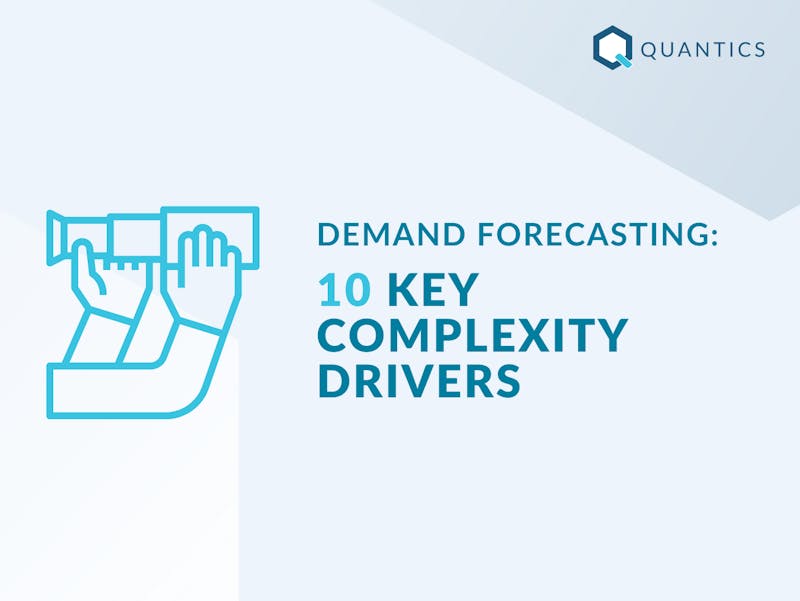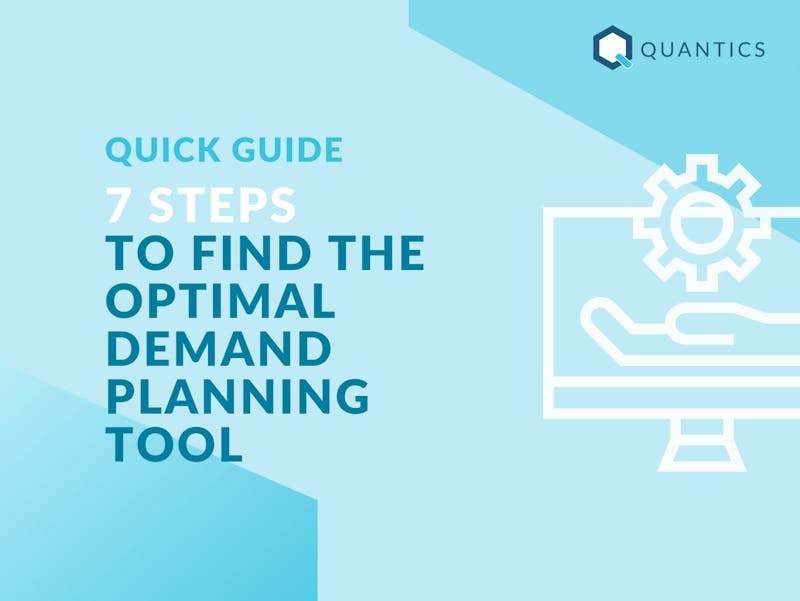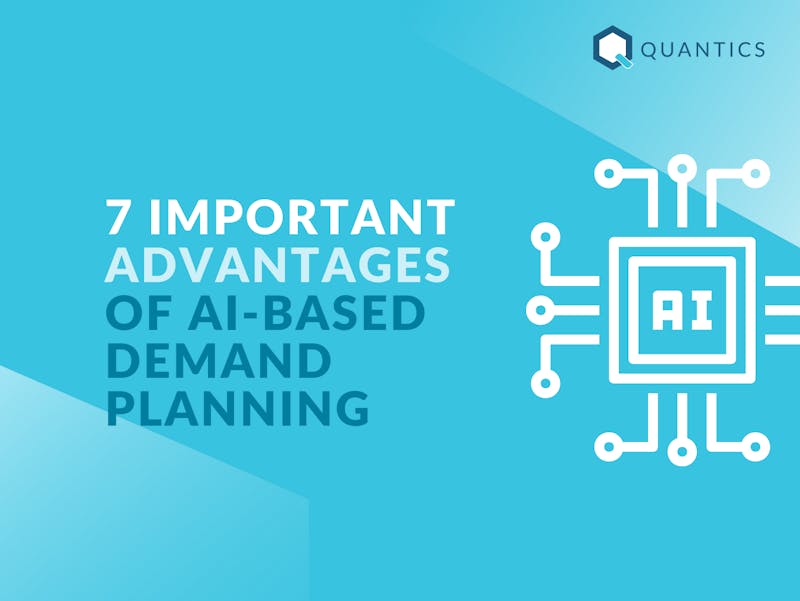Unlocking Manufacturing and Supply Chain Master Data with Digital Twins
The following is an excerpt from Quantics' webinar series "21st Century Supply Chain Planning: Empowering Manufacturers”. In this episode, Gregor Sablič from QLECTOR shares his thoughts and insights with us on digital twins in manufacturing and supply chain.
What is a digital twin and how is it created?
A digital twin creates a virtual replica of a physical object, theoretically, but also practically. This is used to monitor, analyze, and also optimize the performance of certain physical assets, such as machinery, equipment, buildings, or even entire production processes. Physical assets are connected to IoT sensors and a single stream of data called digital thread enables the creation of the digital twin.
What are the main characteristics of a digital twin?
One of the main characteristics of a digital twin is connectivity. It enables a constant flow of data between the physical world and a virtual or digital “real” world. The product status can then be easily shared through the digital twin.
The second characteristic is homogeneity, which is the consolidation of all product information in one place. The intention is that we really have all of the information and as much accurate information as possible in one location.
The digital twin itself also enables adaptability in terms of simulations. Using AI methods, it can adapt to advanced algorithms in the background.
Lastly, it keeps digital traces, preserving the product's operational history, as well as detecting errors and planning improvements.
What are the implications in manufacturing as well as supply chain?
In manufacturing, digital twins are usually used when testing product development. They allow the simulation as well as testing of new product designs before they are built physically.
The second thing is that they can model the entire supply chain, providing insights into logistics, inventory levels and supplier performance. They can enable the digitalization of the whole production process and with this, optimization as well.
We actually have a network of interconnected digital twins through the whole supply chain.
From the plant, the factory has a network of digital twin material flows connected to the last mile delivery and support.
For now, we’ll focus on this first part, the intra-factory network of digital twins; how they can provide improved visibility, as well as how they can enable proactive issue identification and enhance overall operational efficiency.
The Problem
If we put ourselves in one production plant, the problem is that we need to effectively manage multiple resources in this specific plant:
- One resource is machines. So these are physical assets or workstations.
- Another resource is material. Raw material being transformed into final products.
- Finally, we have people, the workers who are responsible for certain operations, and who are able to give machines certain inputs to transform this material.
Our goal is to coordinate all of these resources together in order to create a production process that is as efficient as possible while ensuring the highest possible quality of the finished product. This requires careful planning of the production area, as well as constant monitoring and adaptation of certain changes.
Challenges in Manufacturing
Company internal challenges are present in every manufacturing company and are the background for our digital twin.
One challenge is certainly data accuracy as well as data quality, which results in inefficient internal information transfer between different departments and different teams.
Another common challenge is the discrepancy between theoretical production planning and reality on the shop floor.
Lastly, employees have company specific knowledge locked within themselves, which is not transparently shown in a digital ecosystem. This results in very inefficient inventory levels, low production utilization as well as longer lead times.
However, to go beyond this, to understand why something is happening and to have the ability to predict the future and adapt to certain autonomous responses - autonomous events in the production area - this is where digital twins and AI are helping us.
These technologies have not yet penetrated the market, even though they exist.
Benefits of Leveraging Digital Twins for Master Data Management
QLECTOR’s solution “QLECTOR LEAP” optimizes manufacturing processes like Google Maps optimizes routes. It uses historical data and real-time information to create digital twins of production lines and workers. The system adapts quickly through rescheduling based on current demands, ensuring optimal production. By cleaning master data and offering transparency across departments, it enhances efficiency and responsiveness, aiding in discrepancy identification, optimal production planning, procurement, and stock simulations. Overall, it's a scalable, data-driven solution for agile production management.
What would we like to achieve with predictions that are based on digital twins?
Usually, people in the production area are reacting, spending time putting out fires. Instead of being reactive all the time, before any analysis is completed, we like to be preactive.
Transitioning from a reactive to a pre-active approach in production using digital twins involves predicting events in advance rather than responding to them after they occur. This shift enables proactive decision-making based on forecasts of key performance indicators before production starts, in contrast to traditional reactive methods such as a weekly view.
How do we actually improve organizational excellence by utilizing digital twins in manufacturing?
Utilizing digital twins in manufacturing enhances organizational excellence by simulating shop floor processes and predicting production based on historical data. This technology offers transparency in understanding production, inventory, and potential changes. For companies with multiple plants, digital twins provide a powerful view of operations, considering transportation time and outsourced tasks. They also optimize efficiency by modeling both automatic and manual work centers.
Where do digital twins provide value?
Digital twins help in comparing master data with reality from production by digitizing company specific knowledge.
In Gregor’s full presentation, he offers in depth descriptions of real-world use cases and success stories from QLECTOR and implementing predictions based on digital twins. From these use cases, there are some discernible overall benefits of digital twins.
As far as productivity goes, we see:
- Increase in planner productivity by 50%
- Time savings for logistics personnel by 15%
- Time saved for team coordinators: 1 day/week
- Reduced number of errors
- Shorter production time on assembly lines by 10%
- Reduced organizational downtime by 25%
- Improved asset utilization by 8%
As far as inventory goes, we see:
- Reduced inventory level by 2.5%
- Reduced WIP by 20%
- Increase on-time delivery to customer by 30%
See the full presentation for insights into real-world use cases and success stories, as well as how predictions based on digital twins can improve organizational excellence in manufacturing.
Want to learn more about this topic?
This is an excerpt from "Unlocking Manufacturing and Supply Chain Master Data with Digital Twins” with Gregor Sablič from QLECTOR, on November 21st, 2023.
To watch the full episode, visit Quantics’ YouTube channel where we join Gregor has he dives into the following topics in more detail:
- Introduction to Digital Twins in Manufacturing and Supply Chain
- Benefits of Leveraging Digital Twins for Master Data Management
- Real-World Use Cases and Success Stories: QLECTOR LEAP
- Maximizing Efficiency and Minimizing Costs with Digital Twins
This is an episode of the Quantics' webinars series 21st Century Supply Chain Planning: Empowering Manufacturers. Please keep an eye out for future presentations, panel discussions and information sharing from experts focusing specifically on the needs of manufacturers.
Watch the Full Episode
"Unlocking Manufacturing and Supply Chain Master Data with Digital Twins” with Gregor Sablič
Meet Our Expert: Gregor Sablič
Gregor Sablic serves as the Senior Engineering Expert and Head of Business Development at QLECTOR, a company specializing in the development of AI solutions for manufacturing. Gregor collaborates closely with clients, guiding them through the entire process of reshaping their manufacturing landscape using QLECTOR LEAP, an innovative AI-powered software solution for remote production guiding. Before assuming his current role, Gregor spent several years as a key account manager at SKF Group. His extensive experience in manufacturing and unwavering belief in the transformative potential of data-driven decisions enable him to provide valuable insights into the impact of manufacturing and supply chain data for business decisions, especially when harnessing the potential of Digital Twins.




